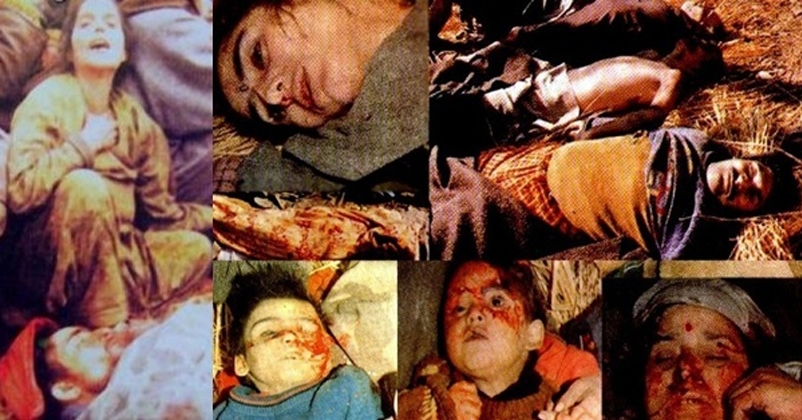Exodus of Kashmiri pandits on 19 Jan 1990 - when the original natives of Kashmir were forced out of their homeland
| 18-Jan-2020 |

History of Kashmir is five thousand years old. Widely rich in cultural heritage, the social structure of valley hasn't been so contented. In course of time, the valley witnessed invasions, attacks, massacres as well as internal turmoil. Even though Kashmir stands firm today despite witnessing immense violence and injustice, but a particular community was not only crushed and humiliated but it also faced assault on its own homeland. In 1990, the actual inhabitants of Kashmir, the Kashmiri Pandits were not only targeted but also forced to flee from valley.
Kashmiri pandits, also referred as the only Hindu natives of Kashmir are the most peace-loving community of Saraswat Brahmins who became worse victims of a planned invasion and atrocity during 1989-90. The threats had been coming in for a long time but the end of year 1989 witnessed assault that was first of its kind. It not only shook the entire community but also forced them to flee their native places and ancestral homes in coming months.
The targets were set, killings began and instilled fear in the whole community
In the wake of 1989, Jammu and Kashmir got entangled in a conflict following the outbreak of separatist movements. Such movements made its way out in both, popular movement and insurgency created by several groups. In particular, The Jammu Kashmir Liberation Front had begun a separatist insurgency for independence of Kashmir from India. On 14th Sept 1989, the terrorist group first targeted a Kashmiri Hindu named Pandit Tika Lal Taploo who was an advocate and a prominent social activist of Jammu and Kashmir. He was shot dead at his own residence before several eyewitnesses but neither any arrests were made, nor the killers were ever caught. The incident instilled fear in the whole community. By the end of the year, threatening of another level begun and so did the killings of more Kashmiri Pandits.
On the night of 19th January 1990, lacs of Kashmiri Pandits were forced to flee from valley through a genocide campaign unleashed by the terror groups. As per the National Human Rights Commission about 209 people were killed in the region and the community was traumatizingly forced out overnight from their homeland. The Kashmiri pandits constituting 99% of the total population of Hindus in Kashmir left the valley and moved to other parts of India or the refugee camps in Jammu. Their ancestral properties were either destroyed or taken over by insurgency groups. While some sources reveal that 1 lac of Kashmiri Pandits left the valley in genocide campaign, others suggest figures as high as 3 lacs.
While their return lacked political will, they are referred as migrants who lived in exile
30 yrs later, the exiled community of Kashmiri Hindus continue to fight for their return to their actual homes. The inhabitants of Kashmir are much lesser in number and are struggling to sustain their existence and establish their identities even after years. The fear of killing and risking their lives never allowed them to return to valley.
Due to disintegration of law and order and a concatenation of assassinations of their community by terrorist groups, the Kashmiri Hindus had left their homes. Since then, the Kashmiri Pandits represent the most visible group of internally displaced individuals in the region. They are officially referred as ‘migrants’, which is the nomenclature employed by the Government of India and that of Jammu and Kashmir to refer to displaced people in the state. Consisted of Brahmins exclusively, their community is also historically associated with the elite class in Kashmir. Jammu is home to approximately 39,000 registered migrant families, including 6,036 families who were accommodated in transit camps since the beginning of their exodus in 89-90. These camp colonies were important centers of the migrant community until residents were relocated to a new township in the outskirts of the city in 2011. For nearly three decades, thus, both in camps and Jammu at large, the Pandits came to constitute a significant presence in the city.